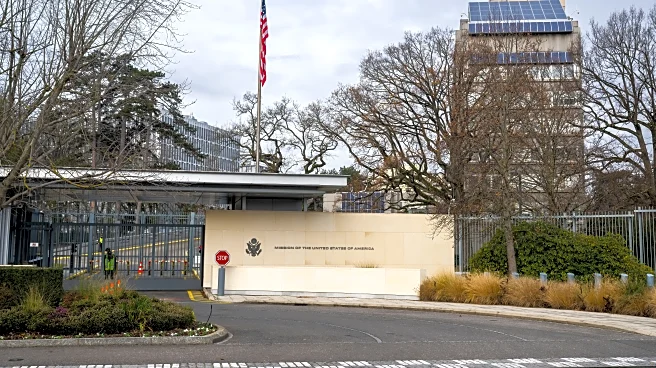What's Happening?
China's military is advancing its counter-AI warfare strategies, focusing on deceiving enemy AI systems. The People’s Liberation Army (PLA) is training troops to manipulate how vehicles appear to sensors,
feed false data into enemy systems, and overwhelm battlefield computers with noise. This approach aims to make enemy AI chase false targets and miss real threats. The PLA's strategy targets data, algorithms, and computing power, employing techniques like data pollution and adversarial attacks. Chinese companies are also marketing products to support these tactics, including multispectral camouflage and electronic warfare gear. The PLA emphasizes human oversight in AI operations, ensuring commanders can override AI decisions when necessary.
Why It's Important?
The development of counter-AI tactics by China highlights the evolving nature of modern warfare, where AI systems play a crucial role. This strategy could impact global military dynamics, as it challenges the effectiveness of AI in warfare. The U.S. military must adapt to these tactics to maintain its technological edge. Failure to do so could lead to vulnerabilities in U.S. defense systems, potentially affecting national security. The PLA's approach underscores the importance of deception in warfare, a lesson learned from recent conflicts like Ukraine, where sensor saturation has increased the need for such tactics.
What's Next?
The U.S. military may need to enhance its AI systems' resilience against deception tactics. This could involve rigorous testing and evaluation, as well as incorporating AI-enabled reconnaissance and deception kits in training exercises. The Department of Defense may also need to update its directives on AI autonomy in weapons to ensure human oversight remains central. As China continues to refine its counter-AI strategies, the U.S. and its allies must develop countermeasures to prevent falling behind in this critical aspect of warfare.













